
Last modification: 01/19/08 19:26

Introduction
One of the big mysteries of the KPA involves the nature of its cabinet profiling. What is it doing, exactly? Is it taking the impulse reponses of its cabinet measurements and storing them along with the profiles? And if so, how long are these measurements? Will far-field miking work? How much room tone can be captured? Or perhaps it's synthesizing a matching EQ curve from the computed response, which would certainly be a compact and flexible approach.
Example 1: Real-world cabinet response with prominent room reflections ("Air").
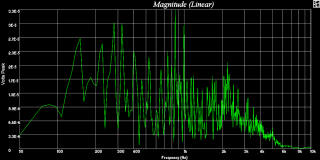 Original "Rammfire AB 50% Air" Impulse Fig. 1: 440mS (.wav) |
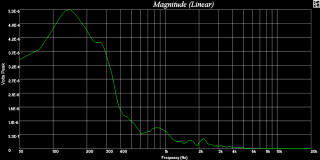 Profile Header (secondary component) Fig. 3: 17mS (.wav) |
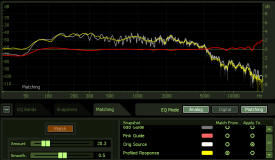 Profile (yellow) vs. Source (white) Fig 5: [ matching EQ differences in red ] |
 Full Profiled Response - smoothed! Fig. 2: only 57mS (.wav) |
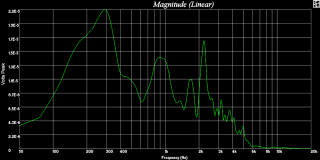 Profile Footer (Primary component) Fig. 4: 40mS (.wav) |
 Full Profiled Response (yellow) vs Fig. 6: Component Responses (white, red) |
(Double-click on any image to zoom. Note modest profile matching EQ correction above 11kHz. in Fig. 5.)
Profiling The Rammfire Cabinet
For this test, I chose a real-world tough cabinet response that would be long enough to provide some sense of the how the KPA profiling process might work. In this case, I used the "Wet Mic 50% Air Blend" version of Richard Z. Kruspe's close-miked dual "Rammfire" cabinet previously published in Tips 'n Tricks. At 440mS, this is rather long for a cabinet impulse and contains a good amount of room tone ("air") which is clearly evident if you play the sample. This impulse response was loaded up into SONAR's Perfect Space convolver plugin and profiled by the Kemper through a Focusrite Saffire Pro 40, whereupon its result was exported back to SONAR using impulse extraction techniques. You can hear the 57mS result here.
It's immediately evident that the Kemper-profiled cabinet has a very similar EQ curve to that of the original source impulse response, albeit without the room tone. By plotting the responses of the two impulses, the Kemper version exhibits a moderately smoothed response of the original cabinet, as you might expect if a matching EQ is used. The detail is about right for such a purpose - there's no point in simulating every EQ notch (those represent localized speaker distortions that would be smoothed if not for the close miking, anyway), and the result is nothing like the smooth, simple curves seen in analog cabinet simulators.
Now let's take a look at the profiled 57mS Rammfire impulse in the time domain:

Fig. 7 - KPA profiled Rammfire dual-cab impulse reponse in the time domain,
consisting of two sections - a short header impulse (17mS) impulse followed by a
longer footer impulse (40mS).
Here we see something common to all KPA cabinet profiles, a divided impulse. The footer impulse (Fig. 4) represents the "meat" of the cabinet response while the header impulse (Fig. 3) is mainly a "resonance bump" which helps bring the combined result closer in line with reality (Fig's 1, 2). The question is, why two impulse responses? Why not just use a single filter? Without further testing, I might guess that what we have are two filters kept separate for a purpose; something user-tailorable (the "High Shift, "Low Shift", "Character" knobs perhaps) followed by a fixed response. At any rate, I might also wonder about the relative latency possibly being introduced by the second filter - could it result in a kind of a "Reverse BBE Sonic Maximizer" effect where the high & mids get delayed relative to the lows?
For all its lack of room reflections, it's easy to see how closely the KPA matches EQ spectrum of the original cabinet impulse in Fig. 5. It's only when you get above 11kHz that you notice much difference, a point which we'll get to next.
Profiling Artificial Noise With Long Decay
Example 2: Synthetic diagnostic cab with low self-correlation, extreme brightness and long linear decay.
 Fig. 8: Original synthetic impulse 1000 mS (.wav) |
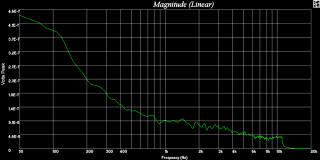 Fig. 10: Profile Header (secondary component) 17 mS (.wav) |
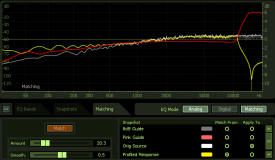 Fig. 12: Profile (yellow) vs. Source (white) [ matching EQ differences in red ] |
 Fig. 9: Full Profiled Response - note LPF only 26 mS (.wav) |
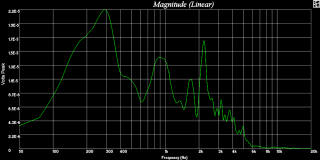 Fig. 11: Profiled Footer (Primary component) 9 mS (.wav) |
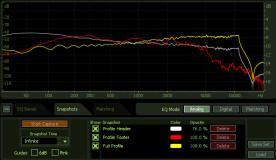 Fig. 13: Full Profiled Response (yellow) vs Component Responses (white, red) |
(Note the sharp 11kHz profile rolloff in Fig. 9, and its equivalent matching spectrum bump in Fig. 12)
This profiling test is wholly artificial, as I wanted to stress-test the KPA profiler both in terms of frequency response and its ability to capture room decay. In this case, a synthetic 1 sec impulse response was generated consisting purely of prime numbers decaying linearly to zero. It's bright, loud, irritating and long for a cabinet response, with negligible self-correlation. If the Kemper truncates its cabinet responses arbitrarily, the result should be revealed here.
But what we get is more EQ matching; the original 1000mS impulse is reduced to a mere 9mS (!) impulse footer preceded by a 17 mS impulse header similar to Fig. 10 like we saw in the Rammfire profile. Take a look at Fig's 8 and 9: As before, we have a moderately smoothed EQ match of the original source impulse, but something else is now clear - a steep low pass filter at 11kHz. This was evident in Fig. 5 as well, only the Rammfire cabinet (like most) is too dark to be revealing at high frequencies. Is this a bad thing? I say no - consider it the Kemper's "Fizz Filter". There's next to nothing of interest in a guitar cab above 11kHz, and it's not even worth modelling for guitar purposes.
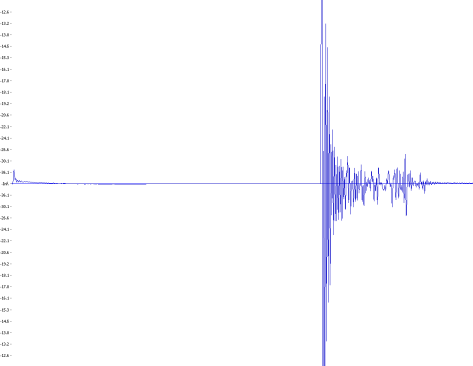
Fig. 14 - KPA profiled Prime Noise impulse reponse in the time domain - another 17mS header followed
by a short (9mS) footer impulse.
Note the similar (17mS) length of the headers in both the examples (Fig. 3, Fig. 10) : This seems to be a filter of fixed length, independent of cabinet and appears in other profiles I've grabbed as well. To me, it reinforces the conclusion that the headers represent some kind of low-end modification to the cabinet responses themselves, which may vary in length (but not to a huge degree.) I suspect that all KPA-profiled cabinet responses measure this way regardless of input, i.e.; a short minimum phase resonance bump followed a smoothed cabinet response of moderate length, both in minimum-phase. You can be certain that the KPA will do its best to capture a realistic spectrum profile of any miked cab, but I doubt that you're going to be seeing any reverb tails or early room reflections on display at present.
Wrap-Up
In this paper I've attempted to divine something of the Kemper's capabilities and limitations in regard to its cabinet profiling, and verify my suspicion that a .kipr -> IR extraction tool might not keep the critics at bay (due to the lack of room reflections) but going in the other direction seems quite feasible. If you want to hear a room, add reverb! It's really quite amazing to consider that this process is even possible when you're trying to analyze a system (a miked cab) independent of the non-linear signal colorations of the amp feeding it. - quite amazing, really.
Everything in this article represents my opinion and understanding of things that I feel comfortable documenting at the present time, and are subject to future revision. It Could All BeWrong, so take everything with a grain of salt. My goal in writing this was neither to praise the Kemper nor damn it, but merely to throw some light on what may be going on inside one particular aspect of this fascinating green box.
Have fun! -djh